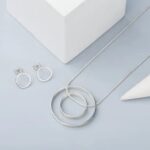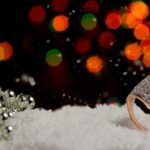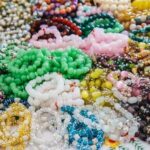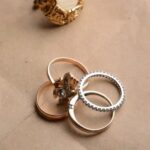Diamonds have long been revered for their beauty, rarity, and status. Whether passed down as family heirlooms or purchased as an investment, owning jewelry with real diamonds holds substantial value. However, with the rise of more affordable imitations flooding the market, it becomes increasingly crucial for consumers to know if their jewelry contains real diamonds or not. In this article, we will explore the importance of identifying real diamonds in jewelry and provide methods to help you determine their authenticity.
To fully appreciate the value and significance of knowing if your jewelry is made with real diamonds, it is important to understand the role that diamonds play in the world of jewelry. Diamonds are not only prized for their stunning beauty but also represent a symbol of commitment and luxury.
Genuine diamonds can be a significant investment, increasing in value over time and serving as valuable assets. Given their high desirability and considerable expense, it is essential for buyers to verify the authenticity of any diamond-containing jewelry they own or plan to purchase.
In today’s market, distinguishing between real diamonds and imitations has become increasingly challenging. Advanced technology allows manufacturers to produce synthetic stones that closely resemble the look and feel of genuine diamond. Therefore, equipping yourself with knowledge on how to identify real diamonds becomes imperative. By understanding key characteristics unique to authentic diamonds and utilizing simple tests at home or seeking confirmation from professionals, you can confidently ensure that your precious jewelry truly contains real diamonds.
The 4C’s
When it comes to determining the authenticity and quality of a diamond, understanding the 4C’s is essential. The 4C’s refer to cut, color, clarity, and carat weight, and they play a crucial role in evaluating the overall value of a diamond.
Cut
The cut of a diamond determines how well it reflects light and ultimately affects its sparkle and brilliance. A well-cut diamond will have precise angles and facets that allow light to enter the stone and reflect back out in a dazzling display.
On the other hand, a poorly cut diamond may appear dull or lackluster. It is important to note that “cut” refers specifically to the craftsmanship of the diamond’s shape and faceting, not its overall shape (such as round or princess).
Color
Diamonds come in a variety of colors, ranging from colorless (which are considered the most valuable) to faint yellow or even fancy colored diamonds. The Gemological Institute of America (GIA) grades diamond color on a scale from D (colorless) to Z (light yellow or brown). The less color present in a diamond, the higher its value.
Clarity
A diamond’s clarity refers to its internal characteristics called inclusions and external blemishes. These imperfections can affect how light passes through the gemstone. Clarity is graded on a scale from Flawless (no internal or external imperfections visible under 10x magnification) to Included (imperfections visible to the naked eye). Diamonds with higher clarity grades are generally more valuable.
Carat Weight
Carat weight measures how much a diamond weighs. As carat weight increases, so does the size and rarity of the diamond, making it more valuable. It is important to note that carat weight does not necessarily determine the overall quality or beauty of a diamond. The other factors, such as cut, color, and clarity, also play significant roles in determining value.
Understanding these key aspects of a diamond’s quality will empower you to make informed decisions when purchasing or evaluating jewelry. By knowing the importance of cut, color, clarity, and carat weight, you can confidently determine if your jewelry contains real diamonds and assess their overall value.
Visual Inspection
When trying to determine if your jewelry contains real diamonds, one of the most valuable tools at your disposal is your own eyes. Visual inspection can provide important clues about the authenticity of a diamond. There are several key characteristics to look for when examining a diamond.
First and foremost, real diamonds exhibit a high level of brilliance, sparkle, and scintillation. This means that they reflect and refract light in a unique way that gives them an unparalleled beauty and shine. When exposed to light, a real diamond will create bright flashes of white light and colorful reflections. These facets of the stone interact with light in such a way that it creates an eye-catching display.
Additionally, when you examine a real diamond closely, you may notice different patterns and shapes within the stone called “inclusions.” Inclusions are natural imperfections or internal flaws found within the diamond. While they may be small or appear insignificant, these inclusions are actually unique identifiers for each individual diamond. They serve as evidence of a diamond’s authenticity because imitations or synthetic stones lack these natural formations.
Another visual clue is related to how a diamond refracts light compared to other gemstones or imitations. When you place a real diamond over text on a piece of paper, it should be nearly impossible to read the words through the stone due to its exceptional ability to bend or scatter light. Conversely, if you can clearly see the text through the stone without any distortion or obstruction, it may indicate that your jewelry does not contain a real diamond.
Visual inspection can provide valuable initial insights into whether your jewelry is made with real diamonds or not. However, remember that it is always advisable to seek expert opinion from professional jewelers or gemologists who have experience and specialized tools to accurately assess the authenticity of your diamonds. They can perform more thorough examinations using microscope magnification and other techniques that go beyond what can be seen with the naked eye alone.
The Fog Test
One simple and reliable method for determining if your jewelry contains real diamonds is the fog test. This quick and easy technique involves examining how a diamond reacts to condensation on its surface. By understanding the science behind this test and following the step-by-step instructions, you can easily assess the authenticity of your diamond jewelry at home.
Understanding the Concept
The fog test is based on the unique properties of diamonds that differentiate them from other gemstones or imitations. Unlike materials such as glass or cubic zirconia, which are excellent conductors of heat, diamonds have high thermal conductivity. This means that when you place a real diamond in front of your breath or any other source of moisture, it will resist fogging up due to its ability to quickly disperse heat.
On the other hand, fake diamonds or gemstones made from materials with lower thermal conductivity will show signs of fogging up for a longer period. This occurs because they do not efficiently dissipate heat and retain moisture on their surfaces.
Step-by-Step Instructions
Conducting the fog test is relatively straightforward and can be done with minimal effort. Follow these steps to determine if your jewelry contains real diamonds:
- Clean your diamond jewelry: Ensure that the surface of your jewelry is free from any dirt, oils, or smudges by gently wiping it with a soft cloth.
- Breathe on the diamond: Take a breath and exhale directly onto the surface of the diamond for approximately 2-4 seconds.
- Observe the reaction: Immediately after breathing on it, look closely at how quickly the moisture dissipates from the surface of the stone. If it vanishes almost instantly or within 1-2 seconds, it is likely a real diamond due to its high thermal conductivity. However, if there appears to be lingering fog or moisture for a longer period, it is likely an imitation.
It is important to note that the fog test should be used as an initial screening method and not as a definitive proof of a diamond’s authenticity. For a more accurate assessment, consult a professional jeweler or gemologist who can employ specialized tools and techniques to provide a thorough evaluation of your jewelry.
By utilizing the fog test, you can gain valuable insights into whether your jewelry contains real diamonds or imitations. This simple yet effective method is accessible to anyone and can help ensure that you are making informed decisions when it comes to purchasing or owning diamond jewelry.
The Newspaper Trick
The newspaper trick is a simple and effective method to determine if your jewelry contains real diamonds. It involves observing how the diamond interacts with the text on a newspaper. This technique works because diamonds have a high refractive index, which causes them to bend light in a way that imitations cannot replicate.
To perform the newspaper trick, follow these steps:
- Place the diamond on top of a printed page of a newspaper or magazine.
- Look through the top of the diamond and onto the text below.
- If you can clearly see the letters through the diamond without any distortion or fuzziness, it is likely a real diamond.
- However, if you notice significant blurring of the letters or if they appear doubled or distorted, it suggests that the stone may be an imitation.
Keep in mind that this test is not foolproof, as some imitations may still pass this test by having similar refractive properties to real diamonds. Therefore, it is always recommended to consult a professional jeweler or gemologist for a comprehensive evaluation.
However, when used in conjunction with other methods like visual inspection and fog tests, the newspaper trick can provide valuable information about whether your jewelry contains real diamonds or not. By taking multiple factors into consideration and seeking expert opinions when needed, you can be more confident in your assessment of your jewelry’s authenticity.
Overall, knowing how to identify real diamonds in your jewelry is crucial for ensuring its value and authenticity. By familiarizing yourself with different testing techniques like the newspaper trick, you can be better equipped to make informed decisions when purchasing or evaluating diamond jewelry.
Professional Verification
When it comes to determining whether your jewelry contains real diamonds, seeking the opinion of a professional jeweler or gemologist is highly recommended. These experts have the knowledge, experience, and specialized tools necessary to accurately assess the authenticity of your diamonds. Here are some reasons why consulting a professional is important:
- Expertise: Professional jewelers and gemologists undergo extensive training to become knowledgeable in their field. They can identify subtle characteristics and differences that may not be easily recognizable to an untrained eye.
- Specialized Tools: These professionals use various tools to examine diamonds, such as magnification devices, refractometers, and microscopes. These tools help them analyze the diamond’s properties like cut, color, and clarity in more detail.
- Unbiased Opinion: Unlike sellers who may have a vested interest in selling their products, reputable professionals provide unbiased opinions based on their expertise. They can give you an honest assessment of your jewelry and help determine if it contains real diamonds.
When consulting a jeweler or gemologist for professional verification of your diamonds, be sure to choose someone who is reputable and certified. Look for certifications from established institutions such as the Gemological Institute of America (GIA) or the American Gem Society (AGS), as these organizations uphold strict standards for diamond grading.
Remember that while seeking expert opinion is crucial in determining the authenticity of your jewelry, it’s important to respect their time and expertise by consulting them with genuine inquiries only. If you suspect that you have synthetic or lab-grown diamonds instead of natural ones, inform the professional beforehand so they can better assist you.
By seeking professional verification, you can gain peace of mind knowing that your jewelry has been thoroughly assessed by experts who understand diamonds inside out. Their objective analysis will help ensure that you have accurate information about your diamonds’ quality and value.
- Expertise: Professional jewelers and gemologists undergo extensive training to become knowledgeable in their field.
- Specialized Tools: These professionals use various tools to examine diamonds, such as magnification devices, refractometers, and microscopes.
- Unbiased Opinion: Unlike sellers who may have a vested interest in selling their products, reputable professionals provide unbiased opinions based on their expertise.
Diamond Certification
Diamond certification plays a crucial role in determining the authenticity and quality of a diamond. Reputable grading laboratories such as the Gemological Institute of America (GIA) or the American Gem Society (AGS) provide impartial assessments of a diamond’s characteristics, known as the 4C’s – cut, color, clarity, and carat weight. These certifications offer assurance and verification to consumers, ensuring they are making informed purchasing decisions and getting what they pay for.
A diamond certificate from a trusted grading laboratory provides an unbiased evaluation of a diamond’s attributes. During the certification process, experts at grading laboratories utilize specialized tools and techniques to assess each aspect of a diamond’s quality. They carefully inspect the stone under controlled lighting conditions to determine its precise cut, color grade, clarity grade, and carat weight.
One significant advantage of obtaining a diamond certificate is that it allows for easy comparison between diamonds. With standardized grading systems in place, consumers can confidently compare one diamond against another based on their certificates. This enables them to evaluate diamonds with similar characteristics side by side and choose the one that best suits their preferences and budget.
| Aspect | Description |
|---|---|
| Cut | Determines how well a diamond reflects light; graded from Excellent to Poor. |
| Color | Rates the presence of yellow or brown tints in a white diamond; graded on a scale from D (colorless) to Z (light yellow or brown). |
| Clarity | Evaluates the presence of internal or external flaws; graded from Flawless (no imperfections visible under 10x magnification) to Included (imperfections visible to the naked eye). |
| Carat Weight | Determines the size of the diamond; one carat is equivalent to 200 milligrams. |
While it is not mandatory to certify every diamond, obtaining a certificate for higher-value diamonds is highly recommended. Certification provides peace of mind and protects consumers from purchasing misrepresented or counterfeit stones. When shopping for diamond jewelry, it is essential to ask for a diamond certificate from a reputable grading laboratory. This document serves as an independent verification of a diamond’s authenticity and quality, ensuring that your investment is genuine and valuable.
Concluding Remarks
After successfully determining that your jewelry contains real diamonds, it is important to take proper care of these precious gems to ensure their longevity and value. Here are some concluding remarks on how to maintain and care for your diamond jewelry:
- Regular Cleaning: Diamonds can lose their sparkle if they become dirty or greasy. To keep them looking radiant, clean your diamond jewelry regularly using warm soapy water and a soft brush. Be sure to rinse them thoroughly and pat dry with a lint-free cloth.
- Storage: When not being worn, store your diamond jewelry separately in a fabric-lined box or pouch to prevent scratching and minimize exposure to dust and moisture. Avoid storing diamonds together as they can scratch each other.
- Safe Handling: Exercise caution when handling your diamond jewelry to avoid dropping them or hitting them against hard surfaces. Diamonds may be the hardest substance on earth, but they can still chip or crack upon impact.
- Professional Maintenance: Consider taking your diamond jewelry for professional inspection and maintenance at least once a year. A jeweler can check for loose stones, prongs that need repair, or any other potential issues that may compromise the integrity of your beautiful diamonds.
- Special Occasion Precautions: While diamonds are durable, certain activities such as sports, gardening, or household chores may pose a risk to your jewelry by subjecting it to unnecessary wear and tear. It’s best to remove your diamond jewelry before engaging in such activities.
By following these simple guidelines, you can keep your diamond jewelry looking brilliant and pristine for years to come. Remember that diamonds are not only aesthetically pleasing but also hold significant financial value; thus, proper care will help retain their worth over time.
As always, consult with a trusted jeweler for specific care recommendations based on the type of setting or metal used in your diamond jewelry collection. Their expertise will ensure you receive tailored advice on maintaining the beauty and brilliance of your precious diamond pieces.
Frequently Asked Questions
In conclusion, understanding how to determine if your jewelry is a real diamond is crucial for any jewelry owner. With the value and significance that diamonds hold in the market, being able to differentiate between genuine diamonds and imitations is essential. By familiarizing yourself with the 4C’s – cut, color, clarity, and carat weight – you can gain a basic understanding of a diamond’s quality. Additionally, visual inspections can provide valuable clues such as brilliance, sparkle, and scintillation.
While simple tests like the fog test or newspaper trick can offer quick assessments of whether your diamond is real or not, it is always recommended to seek expert opinion from professional jewelers or gemologists. These professionals have access to specialized tools and techniques that allow for a more accurate assessment of your jewelry’s authenticity.
Lastly, obtaining diamond certification from reputable grading laboratories like GIA or AGS provides further assurance and verification of a diamond’s authenticity and quality. These certificates carry significant weight in the market and can give you peace of mind when purchasing or selling diamond jewelry.
Frequently Asked Questions: Common Queries Answered:
- What are some common characteristics that indicate a real diamond?
- Are there any other home tests apart from the fog test or newspaper trick?
- How often should I have my diamond jewelry professionally inspected?
- Is it possible for fake diamonds to be certified by grading laboratories?
- Can I trust online sellers when it comes to purchasing authentic diamond jewelry?
Frequently Asked Questions
How do you check if a diamond is real at home?
Checking if a diamond is real at home can be a bit challenging, but there are a few methods you can try. One common method is the fog test. Hold the diamond close to your mouth and breathe on it like you would with a mirror. A real diamond will disperse the heat quickly, leaving no fog or residue behind.
Another method is the water test, where you fill a glass with water and place the diamond in it. If the diamond sinks to the bottom due to its high density, there’s a higher chance it might be real. However, keep in mind that these tests are not foolproof and professional assessment by jewelers using specialized tools is always recommended for an accurate evaluation.
How can you tell if a ring is real?
Determining whether a ring is real or not involves various factors that go beyond just looking at its appearance. Firstly, you should inspect any markings on the ring’s inner surface indicating the metal quality such as “925” for sterling silver or “14K” for gold.
Furthermore, observe signs of wear and tear which could provide clues about authenticity since genuine metals tend to show signs of aging differently from plated ones. Additionally, consider seeking assistance from experts who have sufficient gemological knowledge and equipment to assess whether gemstones set in the ring are genuine or imitations.
How can I check diamond quality?
Evaluating a diamond’s quality requires examining multiple characteristics commonly known as “the Four Cs”: carat weight, color grade, clarity grade, and cut grade. Carat weight refers to how much the diamond weighs while color grade determines its absence of color; diamonds are graded from D (colorless) to Z (yellow or brownish). Clarity grade measures internal imperfections called inclusions and external flaws known as blemishes; clarity grades range from Internally Flawless (IF) to Included (I).
Lastly, cut grade evaluates how well the diamond has been shaped and faceted according to specific proportions reflecting its brilliance, fire, and scintillation. To determine the quality accurately, it is recommended to consult a professional gemologist or utilize reputable diamond grading laboratories like the Gemological Institute of America (GIA).

Welcome to my jewelry blog! My name is Sarah and I am the owner of this blog.
I love making jewelry and sharing my creations with others.
So whether you’re someone who loves wearing jewelry yourself or simply enjoys learning about it, be sure to check out my blog for insightful posts on everything related to this exciting topic!





